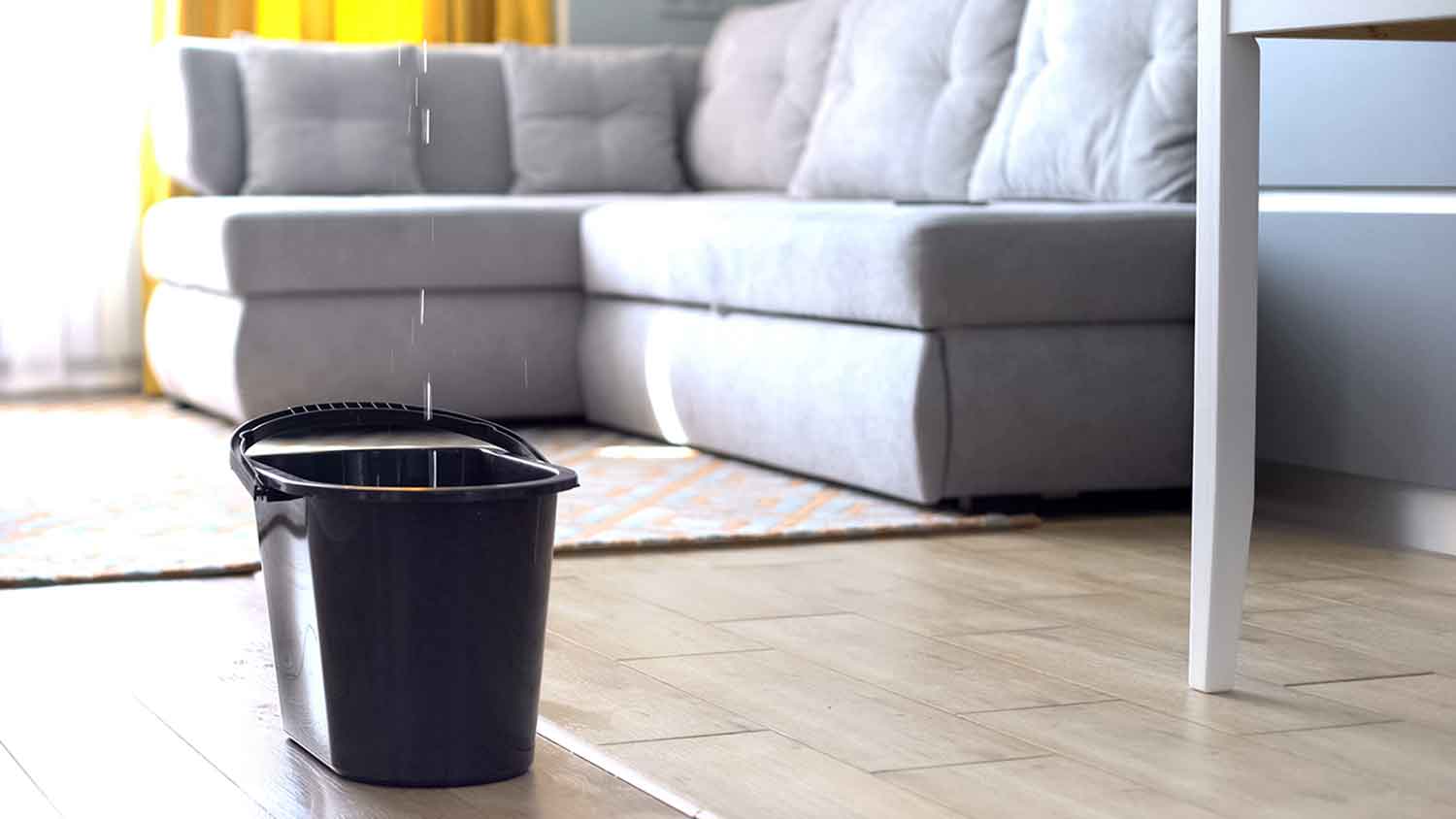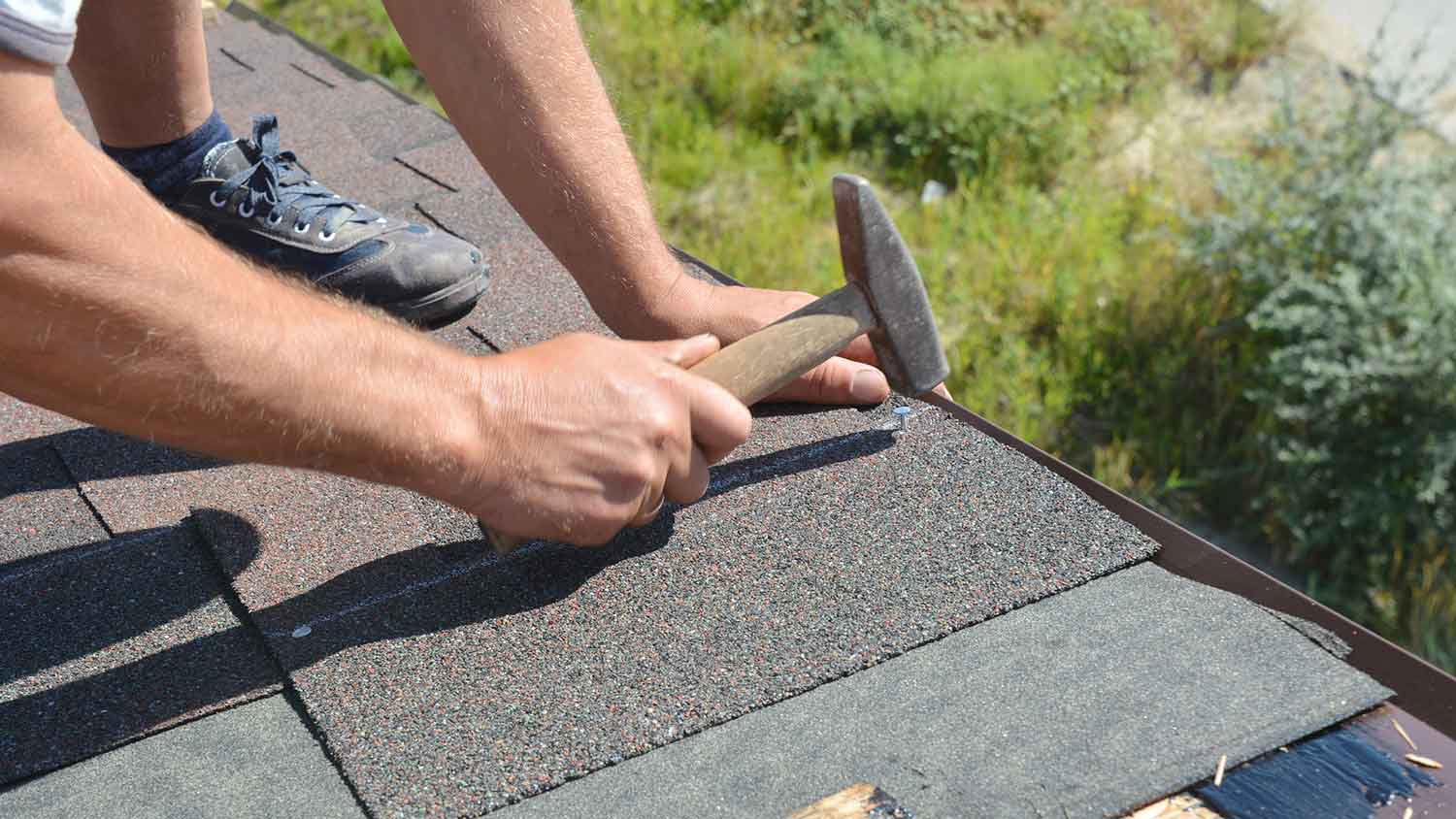
Copper is a luxury roofing material that’s highly desirable and maximizes curb appeal. Learn about copper roof costs and price factors in this guide.
Grab a few supplies and head to the attic


Hearing the steady “drip drip drip” of a leaking roof can spell trouble for a homeowner. Learning how to fix a leaking roof from the inside of a house can help stop a leak temporarily until proper repairs can be done to the outside at the source of the leak.
A roof can leak for a few different reasons, including the following:
Clogged gutters cause water to back up along the edge of the roof and run down the interior walls.
The shingles are old and have lost their ability to shed water, either because they have lost their granules or they are cracked, bent, or missing.
A damaged chimney is allowing water to seep through the area where it connects to the roof.
Roof vents or other roof penetrations are not sealed properly, allowing water to leak through unsealed areas.
Valleys (where two sloped roofs meet) may be damaged or not sealed properly.
Damaged drip edges can allow water to get into the roof and leak into the home.
If there is a leak on the inside of your home, you can perform an emergency roof repair to fix it and stop water from entering the home temporarily; but, to repair the leak properly and to prevent future leaks and even more damage, the source of the leak will need to be repaired on the outside of the roof, preferably before the next rain or snowfall. To fix a leaking roof from the inside, you will need to do a few things.

If you realize that there is a leak in your roof and water is coming inside, the first thing you need to do is catch the water using a bucket or bowl. If the leak is bad, make sure to empty the bucket frequently so the water does not overflow and cause damage to the floor or surrounding areas.

Realizing your roof is leaking can be pretty easy if there are water spots on the ceiling or water dripping from above. But finding the source of the leak can be a little more difficult if water is running across rafters or along the interior of the roof. To locate the source, you will need to head to the attic. Follow the water until you find where it starts and then mark it with chalk, so you can find it again later.
If you identify the leak while it is still leaking, you can put a bucket or bowl underneath to prevent more damage to the ceiling. After the immediate leak is managed, it is time to get your patching materials and wait for the area to dry out.
Once you have located the leak on the inside of the roof, you will have to gather some roof repair materials that will create a temporary fix until you or a professional can get to the outside of the roof for a more permanent repair. You will have to wait until the area is fully dry before you can patch it, so that gives you time to search your home for supplies or head to the hardware store.
To fix a roof leak from the inside, you will need:
Work gloves
Trash bags
Putty knife
Roofing tar
A shingle
When the area around the hole has dried, it is time to patch it.

If water from the leak soaked into the insulation, it will have to be removed and replaced after the leak is patched. Wearing gloves to protect your hands, remove any damaged or wet insulation and put it in the trash bags for disposal.
Using the putty knife, scrape off and remove any loose or damaged material from the site of the leak. This will help the patching materials to adhere better.
Apply roof tar or bitumen liberally to the site of the leak, making sure to cover an area larger than the shingle you will be using to cover it.
Once the roof tar or bitumen has been applied, place the shingle on top of it and press firmly to get it to adhere to the inside of the room. Add some more roof tar or bitumen around the edges to secure it, so that water cannot enter the home the next time it rains.

If there is a leak on the interior of the roof, that means there is damage to the exterior of the roof. After the storm has passed and the roof has dried out, it is important to have a local roof leak repair contractor assess the situation and determine the next steps.
If you own a home, you should always be on the lookout for signs your roof has a leak. That does not mean you need to get up on the roof daily to check it out, but you should be aware of signs that there might be a problem. These include water stains on the walls and ceilings, mold on the exterior walls, and dripping in the attic or elsewhere.
To prevent these things from happening in the first place, you should be on the lookout for signs that the roof may need some attention and repairs before a leak begins. Things to look for include:
Damaged or missing flashing; this can include the drip edge and flashing that surrounds roof penetrations
Damaged shingles
Missing shingles
Loose granules on asphalt shingles
Clogged gutters
Water puddled on the roof
If you notice any of these signs that your roof needs to be repaired, it is important to address them right away (when the weather is good) to prevent future leaks.
If you need to stop a roof leak from the inside, chances are it is an emergency fix or one that will keep the inside of the house dry until you can do a more permanent fix on the outside of the roof. That said, hiring a pro to fix a leaking roof from the inside can ensure it is done correctly. A professional may also be better at tracking down the source of the leak and assessing the damage to prepare for a complete, permanent fix down the road. If you choose to fix the leaking roof yourself, it can cost between $10 and $120, while hiring a company to fix your leaky roof problems can cost between $360 and $1,550.
From average costs to expert advice, get all the answers you need to get your job done.

Copper is a luxury roofing material that’s highly desirable and maximizes curb appeal. Learn about copper roof costs and price factors in this guide.

A new metal roof can add a unique touch to your home’s curb appeal and help maximize efficiency. Learn about metal roof costs and what affects your total.

Torch down roofing costs are based on roofing materials and labor, among other factors. Read our guide to learn more about the costs of this flat roof material.

Roof sealant helps protect your roof from the elements. Learn about different types of roof sealant and how to pick the right one for your roof.

Are you trying to pick a soffit and fascia material for your roof? Here are 10 options for the right finishing touch on your house.

Not sure if you need a new roof yet? Check out these warning signs that you need a new roof to catch roof problems early.